5 cars we’ll miss in 2024—and 5 we won’t
As 2023 winds to a close and we turn our attention to what lies ahead, a moment of reflection is due for cars that won’t see another year. In true end-of-year fashion, we’re feeling a bit dismayed about a few vehicles that are making their way to the big parking lot in the sky. We’re also happy to show a handful of vehicles to the exit.
Presented here, in no particular order, are five cars that we’ll miss come 2024—and five that we most certainly won’t. Be sure to join us in the comments: Which of our choices do you agree with? What other vehicles should have made the list?
We’ll miss:
Chevrolet Camaro

We’ve already covered the Camaro’s demise in extensive detail, from the last sixth-gen to roll off the assembly line (a manual ZL1 1LE) to four unique models that time forgot. But to say we’ll miss the Camaro remains an understatement.
Over six triumphant generations, the Camaro stoked the pony car wars to ever-increasing heights. With no word yet from Chevy on any sort of succession plans, there’s an Alpha-platformed hole in our hearts. The sixth-generation car was a genuine performance masterpiece, gifting the Camaro with a superb chassis that finally matched (or even exceeded) the heroic powerplants found under the hood. Pour one out, folks: The loss of this one stings.
Dodge Challenger/Charger

If the Camaro was the athlete of the Detroit muscle crowd and the Mustang was the icon, then the Dodge Charger and Challenger siblings were the ones you wanted to hang with at a party. Their boisterous demeanor and ability to meet buyers at seemingly any price point meant that there was a Mopar solution for everyone.
While there are rumblings of a new gas-powered Challenger on the horizon, and Dodge snuck a new vehicle silhouette into a holiday ad, such a vehicle will likely ditch the rumbling Hemi V-8 in favor of a twin-turbo inline-six. The Challenger and Charger names may endure, but their ethos will change significantly. For that reason, we mourn the demise of the Mopar twins.
Audi TT
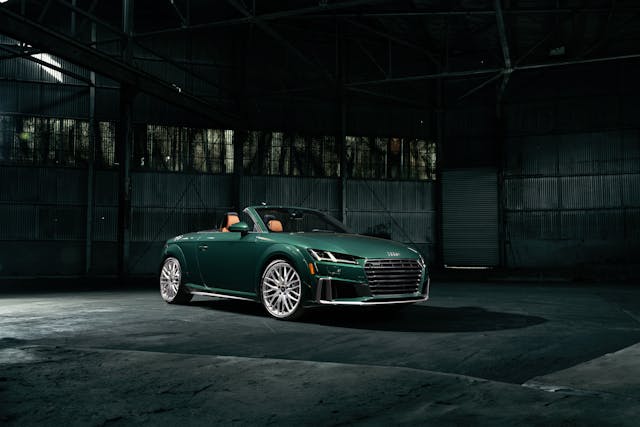
When Freeman Thomas sketched out the first lines for the Audi TT, few could have predicted the impact the car would have—not just on Audi’s trajectory, but on the entire world of automotive design. When the Mk1 TT hit the streets in 1998, it was an immediate success. Early examples are now starting to find a place within the collector-car zeitgeist.
The TT spanned three generations over 25 years, but it will not see the calendar turn over again. Little sports cars like this are a hard segment to survive in, but the TT managed to do so without ever sacrificing the avant-garde styling that made the first one such a revelation. The gorgeous green going-away present pictured above is one of 50 Final Edition cars, all of which are coming to the U.S. The TT departs this world with its head held high—for very good reason.
Kia Stinger
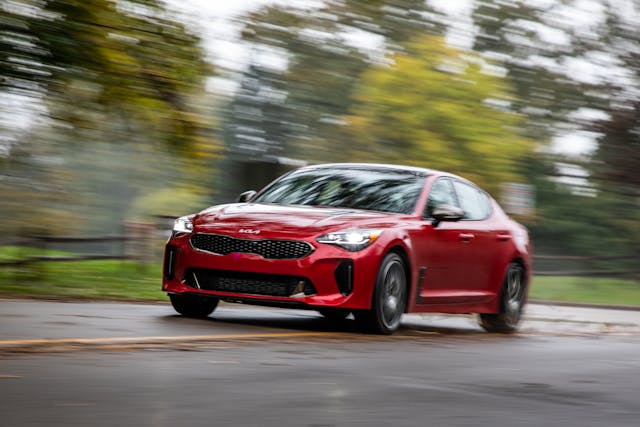
The shapely proportions of a four-door liftback, a 365-hp twin-turbo V-6, all- or rear-wheel-drive, and genuine sporting intent … from a Kia? That was the thought clanging around much of the automotive world when the Stinger arrived in 2017.
Kia wanted to use the Stinger to change the public’s perception of the company from rental-fleet-chic to something a bit more aspirational. The success of the Stinger in that regard is up for debate—the Telluride did more of the heavy lifting—but the fact that the Stinger was a genuinely interesting machine is fact. Like the Pontiac GTO—yes, we went there, figuratively and literally—the Stinger was an attempt to get buyers to pay attention. Unfortunately, the Stinger was always in for an uphill battle, and 2023 marks the year it finally waves the white flag.
Audi R8
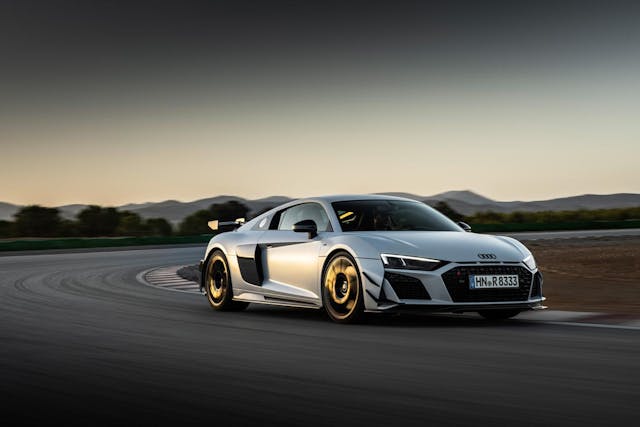
Over two generations, Audi’s mid-engined supercar shone as the brand’s most aspirational product. It may have been overshadowed a bit by the Lamborghini Huracán, with which it shared a platform and engine, but the R8 was no snoozer.
After a few years of coasting down the depreciation curve, first-gen R8s are starting to catch the eyes of collectors. Heck, we put it on last year’s Bull Market List (though, one year on, it hasn’t ascended to the heights we thought it might.) Perhaps the second-gen cars will experience a similar fate one day. This author certainly hopes so, because he has a bit of a soft spot for the R8. Way back when I first left college 10 days early to start my first job at Car and Driver, the Audi R8 was the first car I was allowed to drive—very slowly, through the parking lot of Virginia International Raceway over to the gas pumps. Still counts.
We won’t miss:
Fiat 500X/Jeep Renegade
We won’t miss either of these two, but our distaste for each stems from different places. The Fiat 500X and the Jeep Renegade were basically two adaptations of the same basic platform and drivetrain by two different brands.
We’d consider the Jeep the more appealing of the two, because, well, Jeep, but neither model wowed the American buyer. The 500X always felt quite compromised and uninspired, with European styling that failed to translate to our shores. The Renegade, while cute, is a spendy (just shy of $30K) proposition that’s also priced too similarly to the Compass ($27,495), a more spacious offering. Sales for the Renegade have plummeted in recent months, while sales of the 500X never really took off.
Mazda MX-30
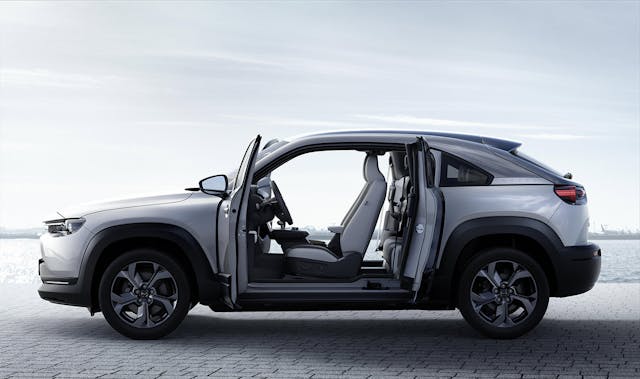
Sold exclusively in California, the Mazda MX-30 was kind of destined to be a flop. With a 35.5-kWh battery and a meager, EPA-estimated electric range of 100 miles, this thing was handily outgunned by the competition by the time it arrived. Small and cramped, with a rear-hinged second-row door that opens like those on older extended-cab pickups, the MX-30 felt like the bizarre answer to a question almost nobody asked. That it won’t survive another year might just be in the best interests of everyone.
Mercedes-Benz CLS-Class
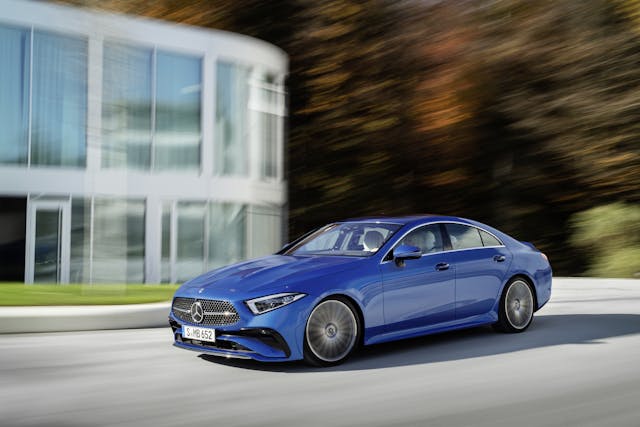
For a while there, the Mercedes-Benz order catalog reminded us a lot of the menu at The Cheesecake Factory: We’re sure many of the offerings on hand are quite tasty, but the sheer volume of options triggers paralysis by analysis.
The CLS-Class was initially pitched as a style-forward tweener that employed the E-Class chassis and a copious amount of sweeping bodylines. (It also fell into that silly camp of “four-door coupes” at which we loved to roll our eyes.) When Mercedes announced in 2022 that it would begin trimming its product lineup to focus on core offerings, we knew the writing was on the wall for a few of these go-betweens. For 2024, the CLS-Class is no more—not that most will notice.
Jeep Cherokee

Let’s make one thing clear here: We do miss the Jeep Cherokee. We just won’t miss this Jeep Cherokee.
Revived in 2014 for a lower-rung model situated below the costlier Grand Cherokee and above the Renegade, the Cherokee nameplate has, for the better part of a decade, come to denote a unibody crossover SUV that never could quite hack it against the competition. The nine-speed automatic gearbox was a consistent disappointment and the interior always lagged behind the competition in terms of finish, design, and quality.
Maybe we can all just forget this thing ever happened and agree to envision the loveable, boxy XJ when we talk about Jeep Cherokees. What do you say?
Kia Rio
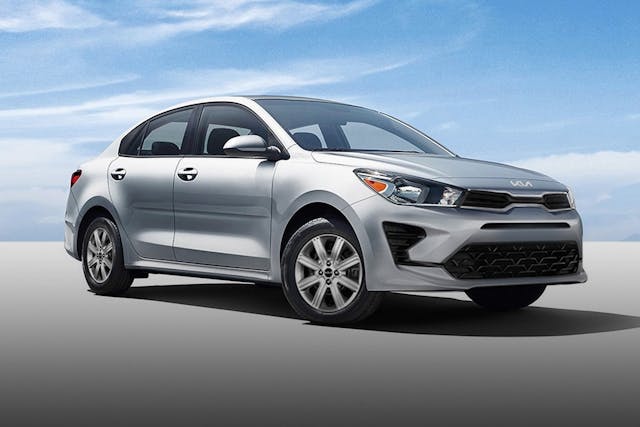
Normally, we’d lament the demise of yet another affordable car that could be had new with a warranty for under $20,000. But in the case of the Kia Rio, we’ll hold our tongues. Ask gearheads to explain what they picture when you say, “Kia Rio,” and you’ll quickly hear jokes about engines flying through the hoods and tales of generally terrible build quality.
The current Rio is a fine car, but fine doesn’t cut it in a segment where the profit margins are thin and sales trends are only pointing down. In reality, there’s probably room for two, maybe three offerings in the subcompact sedan segment these days in America, and Nissan’s Versa and the Mitsubishi Mirage will carry this banner into 2024.
***
Check out the Hagerty Media homepage so you don’t miss a single story, or better yet, bookmark it. To get our best stories delivered right to your inbox, subscribe to our newsletters.
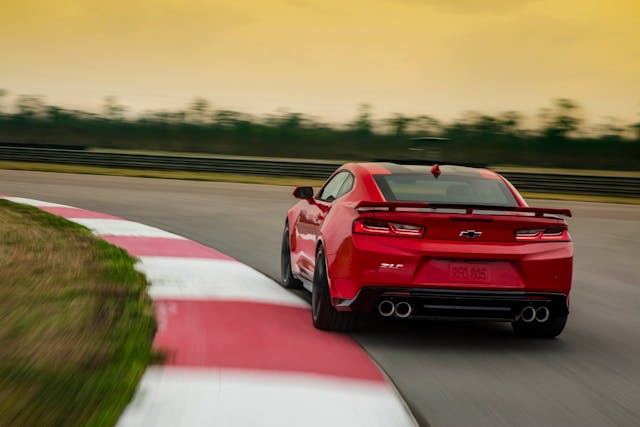




I think the late Charger was a poor substitute for the original. Just like naming the Mustang after the real thing. Just marketing trickery.
So car companies cannot update a car once it has been named? With your logic, modern 911s aren’t 911s, modern Ferraris aren’t real Ferraris, modern Minis aren’t Minis, and modern Accords aren’t Accords. They are all just marketing trickery? In everything but performance, I agree with your Charger comment. Somehow, Chrysler completely blew an opportunity to have a gorgeous Charger on the road for the last 18 years instead of the blah they have been shipping all that time. Ditto for the Challenger, btw. Neither car is “bad looking” but neither car is up to the standards of the originals when it comes to design/styling. The modern Challenger was just a big car with a pony-car name and pony car accommodations.
I would not miss the maintenance nightmares that all Audi’s are when they get some age on them. They may be fun when new but you had better have a large bank account when they need work (same for Mercedes and BMW). Too many electronic junk and plastic cheapo (though expensive to buy) plastic parts. To much ‘engine out’ service for what should be relatively easy stuff. Too bad Kia/Hyundai had bad press due to their last generation of engines that were bad and the lack of good anti-theft devices. Our 2008 Accent was a decent car for the money. It had some issues but the driveline was very reliable.
Before retirement, I purchased a 2009 Genesis with the 4.6 liter aluminum block v-8. Putting many miles on it due to my sales job, I wanted a comfy car with some performance , without the big bucks. Retired in 2017 and still have the Korean car, which has been trouble free, good with fuel, and flies when I get frisky. 😏
Having owned four MB CLS models since my first new gen 1 in 2008 I have to disagree. Yes we are a family of 3 (and all relatively short) so the 4 seat didn’t create an issue for us but it was an excellent daily driver that filled the void when not driving my 911 turbo. My final one a CLS63 was an absolute beast that would smoke the tires at will.I understand families of 3 aren’t the norm but they didn’t flood the market with these cars either so I think they had their place. The various upgrades made it far from an E class in every way. Hopefully MB’s “all in” efforts to go electric doesn’t tank their company but so far I don’t see any new model MB’s on my wish list.
The Camaro, Charger, and Challenger are the only ones on the list that I personally would miss. The rest I would never buy or would ever think of buying!
Didn’t mind the styling on the Fiat 500x. But then, I got one as a loaner, when my Alfa in for service:
awful driving experience. Slow, poor handling, terrible body control. Just a crap vehicle.
For an Italian design, what a disappointment.
I will miss the VW Golf alltrack…it is a great vehicle that while not an SUV still offers lots of room given it is a wagon,complete with AWD, good clearance and peppy turbo 4 cyclinder. Lou’s Garage on the globe and Mail lists it as one of their favorites in terms of reliability etc
Agreed that the Alltrack was worthy of a spot on the ‘cars we’ll miss’ list. I drove one hard in winter on packed snow and it was amazing (though I would have preferred a manual). I’ll be looking for a used Alltrack when the time comes to replace my ‘07 Passat wagon winter-beater. I hope I’ll be able to find a good one at the bottom of its depreciation curve in 2030-2033 or so, before Canada’s planned EV Singularity in 2035 causes the price of all gas cars to shoot up wildly from 2034 on…
Kia Rio: My daughter bought one out of college for three reasons, it was what she could afford, did not charge extra for blue paint or smart phone connectivity. In the three years she has owned it, maintenance only. She does her own oil changes and service at my house as her apartment does not allow that sort of thing. She washes by hand and waxes with proper paste wax 4 times a year. (raised right) Reminds me of my first new car, a blue Civic. That Civic was simple, reliable and cheap to keep. Few consumers appreciate simple, and companies are eager to supply loaded high margin vehicles that those same consumers can complain about repair bills. Sorry to see one less simple, reliable affordable car.
Yeah I’ll second this. I had a Rio as a rental recently and I absolutely agree that it was the closest thing possible to the cheap-and-cheerful compacts of the mid-’90s and earlier. But then again, most of the market would consider that more insult than praise.
I will say their NVH engineers deserve a little credit, though; it’s a pure internal combustion engine vehicle that is nearly as silent as a hybrid at parking lot speeds or a stationary idle.
I agree with the Challenger/Charger demise but not the Cherokee. My wife has a ’19 and loves it, I like it too. It’s a shame Stelantis is killing the popular cars soon Jeep and Ram will be the only Mopar brands left.
I agree wholeheartedly. Coming from a person born in 1957 it’s sad to see these cars disappear. Definitely gone but not forgotten. I still believe that the government force feeding us to go all Electric a fallacy and a failure to the American way of life. Long live Gasoline!!
What, precisely, is “a failure to the American way of life”? Did you mean “an assault on the American way of life”? If so, then yes, you are right, the switch to EVs is meant to radically change the toxic American way of living in total dependence on burning fossil fuels. Of course, you might have meant “a failure *in* the American way of life, and that would be true too. But the way you wrote it actually means nothing at all, formally, and so we are left to wonder just what, exactly, might be going on in your head. Ah well.
“The government force feeding us” Where did that come from? There are two reasons that all electric is inevitable. !. Self survival. Pollution is killing us. The fact that pollution is decreased only in areas where electricity is generated by non fossil fuel burning plants will see the benefit, it is still a big plus. 2. The second reason is market forces. Europe started this, specifically Germany, when they set a date that prohibited the selling of ICEs. The rest of the EU followed. This is basically due to reason 1, however, USA auto makers are not going to make cars that they can’t sell in in the EU.
Bunka is correct, the government is the one that mandates and gives out Billions in consumer grants to buy them. But then you said that Germany and the EU prohibited the selling….so which is it?
1. Look up the break even point for their production/mining,and use vs regular vehicles. In the meantime, China builds several new coal fired power plants each year and has well over 1000 of them going- look on a map to see which way their pollution is going.
2.Germany just ended EV subsidies, sales are falling world wide anyways. Very few American cars sell in the EU due to import duties anyways, nice try though.
Challenger / Charger was a failure from the word “go”. What other car would a 5 foot 10” driver have to duck when getting in and out to avoid banging his head on the door opening?
I agree with the choices in the article. But for the life of me I do not understand why GM would stop making the Camaro.
Sales were dropping due to GM’s lack of promotion, despite the ZL1 out running and out handling Mustangs and Hellcats.
Then the magazine articles about poor rear vision, which after a couple days you get used to and is rather moot with the rear camera routed to the mirror. The fact is that most crossovers have worse rearward vision, and the Stinger is worse than a Camaro but we never hear about that.
BTW I have Gen 6 ZL1 convertible and coupe
It has much to do with continually being outsold by the Mustang and Challenger over the past decade. Even Chevrolet brass admitted the Mustang was “eating the Camaro’s lunch.” Besides, Chevy still has the Corvette and will surely point Camaro hopefuls in that direction.
Am A retired Ford Line Worker 1968-1998, (30 Years)—I Have Always Bought my “Bread & Butter Fords For Everyday Use” But For Fun I bought A 57 B’air in 80 & An 86 Vette in 86—Still Love Both But will Always buy Fords for everyday Use. The Old “fix or repair Daily” was Never True to me.
A shout out to you, sir! I have a 2002 F-350 w/ the 7.3 liter. It is a ranch vehicle that is always hauling or towing something, sounds like a can of ball bearings are rattling around the engine compartment, and gets ‘meh’ fuel economy. But damn if it doesn’t just keep on trucking! My buddys have all got 100 K beauty queen trucks, think I’ll stick with my old pal.
I”m done with new cars keep driving my old 59 Willy’s Wagon 66 Stude Commander and 64 Ford Fairlane as soon as i’m finished restoring her. Merry Christmas and a Happy and Heaithy New Year to all.
We have a 2013 & 2018 Hot Wheels Edition Camaros & an 08 Challenger SRT8 numbered car. We have Fords as well, we have the big 3 covered.
That’s the way I always felt. I find four door “muscle” cars miss the mark. Adding the graphics is like adding lipstick on a pig.
Was responding to Chargers and Mach E not really related to the originals